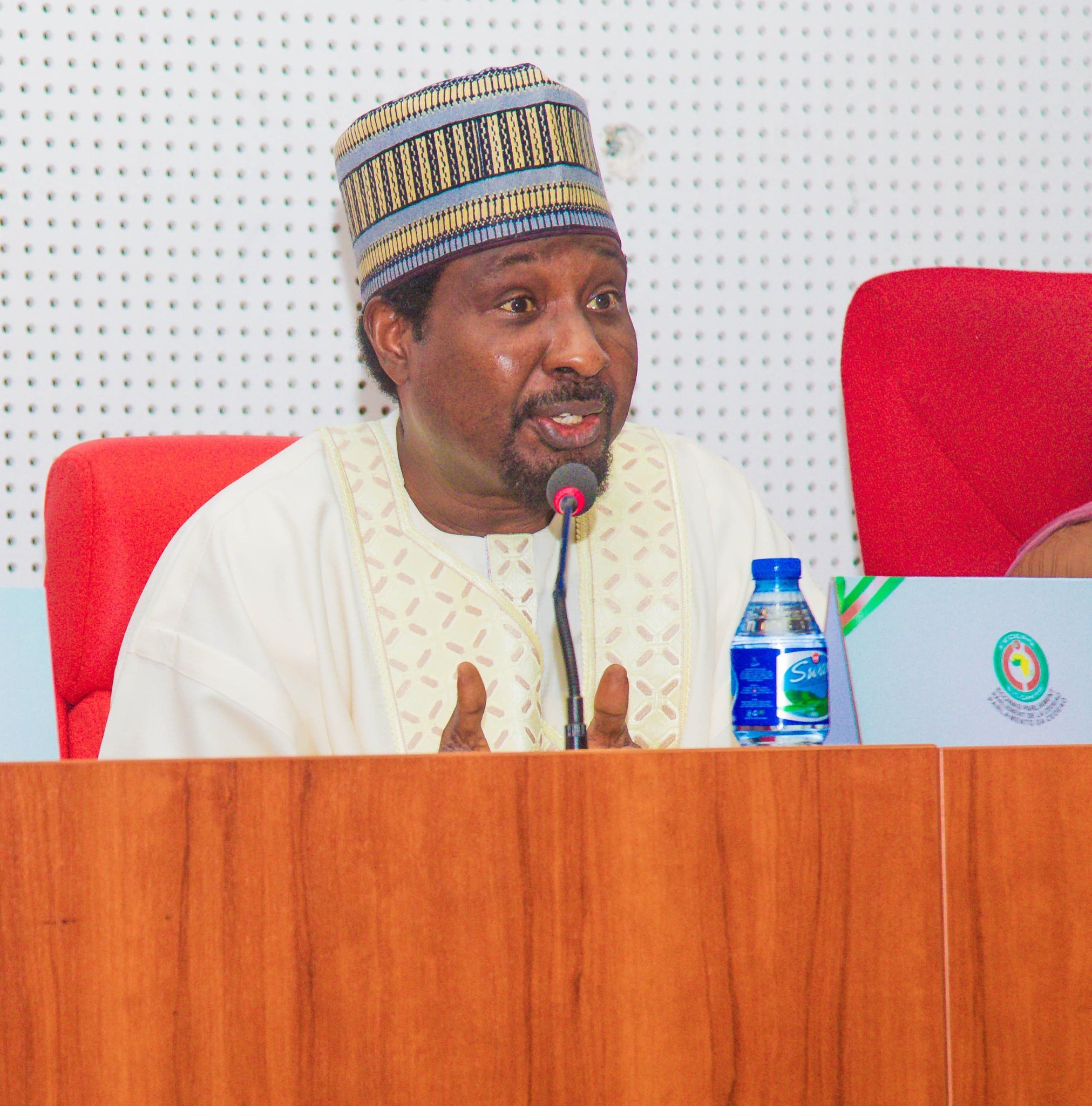How Mobile Device Financing is Accelerating Smartphone Adoption Across Africa
Across Africa, smartphones have transitioned from desirable gadgets to essential instruments for daily life, underpinning communication, education, and economic participation. Their role has become so fundamental that a lack of access creates significant disadvantages.
Yet, the substantial upfront cost of acquiring these devices remains a formidable barrier for a vast population segment. Many individuals and households cannot afford the lump-sum payments required, creating a stark gap between the necessity of smartphone ownership and its accessibility.
Mobile device locking SaaS is emerging as a pivotal and innovative mechanism for addressing this critical challenge by enabling mobile device financing. This approach fundamentally alters the acquisition model, enabling individuals to obtain smartphones through structured, manageable installments rather than prohibitive upfront costs. It directly confronts the affordability hurdle that has historically limited smartphone penetration.
As these financing solutions gain traction, they are not merely facilitating purchases but catalyzing broader access to technology, particularly within previously underserved communities and regions. This trend fundamentally reshapes how digital technology permeates African societies, making the vision of widespread digital inclusion increasingly attainable and transforming lives by connecting millions to essential online services.
The shift from traditional retail models, often ill-suited to the economic realities of many potential users, towards these more flexible financing structures signifies a market adapting to meet a critical, unmet need.
Smartphones serve as vital conduits for progress and development across Africa. They enhance access to crucial services, foster innovation, and overcome connectivity deficits in areas where traditional infrastructure may be lacking or underdeveloped. Their impact spans critical sectors, including finance, education, healthcare, and commerce.
One of the most profound impacts of smartphone proliferation is the expansion of financial inclusion. These devices are gateways for millions to access mobile banking and digital payment platforms, bringing formal financial services to the fingertips of previously unbanked or underbanked populations.
Services exemplified by M-Pesa in East Africa allow users to securely send, receive, and store funds, drastically reducing reliance on cash transactions, which can be inefficient and insecure. The adoption of mobile wallets enhances personal financial security and management.
Beyond individual convenience, digital financial tools are powerful engines for broader economic inclusion. Rural communities, often geographically isolated from traditional banking infrastructure, gain access to essential credit and savings platforms via their mobile devices. Entrepreneurs, who form the backbone of many African economies, leverage these services not only for basic transactions but also to secure working capital, manage cash flow, and ultimately sustain and expand their businesses.
The very utility of these mobile financial services creates a compelling reason for individuals to acquire a smartphone, establishing a mutually reinforcing dynamic where the demand for digital finance fuels smartphone adoption, and increased smartphone access further accelerates the growth of the digital financial ecosystem. This cycle is significantly amplified by the availability of device financing, which lowers the initial barrier to obtaining the necessary hardware.
Smartphones are crucial in democratizing access to educational resources and improving healthcare delivery. In the education sector, they enable students, particularly those in remote or resource-constrained areas, to access a wealth of digital learning materials through e-learning platforms.
Organizations like Eneza Education exemplify this potential, offering affordable, quality educational content directly to students’ mobile devices, overcoming the limitations of physical school infrastructure. Furthermore, numerous mobile applications and online courses facilitate adult skill development and continuous learning opportunities.
The rise of telemedicine applications in healthcare allows patients to consult with doctors and healthcare professionals remotely. This capability is particularly transformative in regions where accessing physical clinics involves long distances and significant travel costs. It improves diagnostic reach and facilitates timely medical advice.
Concurrently, health professionals are increasingly utilizing mobile data collection tools on smartphones to monitor public health trends, manage patient records more efficiently, and improve the overall effectiveness of health interventions. In essence, mobile technology enables African nations to leapfrog traditional infrastructure constraints in education and healthcare, providing alternative, accessible channels for vital service delivery where physical access remains a challenge.
The proliferation of smartphones is a significant catalyst for entrepreneurship and economic expansion across the continent. For small and medium-sized enterprises (SMEs), mobile platforms provide unprecedented access to broader markets, breaking traditional geographical barriers.
Ecommerce applications, such as Jumia, empower local vendors and artisans to sell their goods and services within their communities, regionally, and even internationally, dramatically increasing their potential customer base.
Mobile connectivity fosters innovation across diverse sectors, including agriculture, where apps provide farmers with weather information and market prices, and transportation, where mobile platforms optimize logistics and ride-sharing services.
Local software developers are increasingly creating bespoke applications to address specific community challenges, ranging from service delivery coordination to information dissemination. This burgeoning app economy solves local problems, generates significant economic opportunities, and fosters job creation in digital technology and related support services.
The impact extends beyond merely scaling existing businesses; mobile platforms reduce transaction costs, improve market information flow, and enable new, efficient business models that were previously impractical, thereby acting as catalysts for new economic activity and enhanced market efficiency.
Despite the clear and compelling benefits, several significant obstacles hinder widespread smartphone adoption in Africa. These barriers limit access to the crucial digital services that smartphones enable, with high costs and infrastructure deficiencies being particularly prominent challenges.
Financial constraints remain the primary impediment for many potential smartphone users. While the devices themselves are decreasing in absolute cost globally, they often represent a substantial financial burden, frequently equivalent to several months’ income for individuals in low-income households.
Compounding this is the scarcity of traditional financing options; formal lenders often do not cater to underserved populations or those working in the informal sector, limiting avenues for acquiring devices on credit.
A critical factor is income instability. Many of the workforce rely on informal employment, characterized by irregular earnings. This makes committing to fixed, regular payments for a loan challenging, even if the total cost were manageable over time. This challenge of unpredictable cash flow, distinct from simply having a low income, underscores why conventional credit models often fail and highlights the need for more flexible payment structures, such as Pay-As-You-Go (PAYG), which can better accommodate fluctuating income streams.
In addition, government policies can exacerbate affordability issues. High import taxes and duties levied on electronic devices in many African nations significantly inflate the retail prices of smartphones. This is particularly acute in landlocked countries that are facing higher logistical costs.
Such fiscal policies, often aimed at revenue generation, can inadvertently work against national goals for digital inclusion by pushing devices further out of reach. This creates a tension between fiscal objectives and digital transformation strategies that requires careful policy consideration and alignment.
Beyond direct costs, significant infrastructure gaps limit smartphones’ utility and appeal. A major issue is the lack of reliable electricity access. Estimates suggest that over 50% of the population in Sub-Saharan Africa lacks consistent power, making the simple act of charging a device difficult, costly (e.g., paying for charging services), or impossible. This fundamentally restricts device usage.
Inadequate mobile network coverage is another critical barrier, especially in rural and remote areas. Without reliable network signals, a smartphone’s core functionalities are severely diminished. Even in places where coverage technically exists, users often contend with slow internet speeds. This poor connectivity limits the effectiveness of many applications and services, from streaming educational videos to participating in video-based telemedicine or accessing complex websites.
Finally, the high cost of mobile data presents a significant ongoing expense, discouraging regular internet use, even for those who own a smartphone. Expensive data plans mean users may limit online activity to conserve costs, thereby underutilizing the device’s potential. These infrastructure challenges – power, network reach, speed, and data cost – substantially reduce the practical value proposition of owning a smartphone.
A device that is expensive to acquire becomes an even poorer investment if it cannot be reliably charged or used for its intended connected purposes. This interaction between cost and limited utility creates a compounded barrier to adoption, indicating that financing solutions alone are insufficient without parallel investments in enabling infrastructure.
Mobile device financing emerges as a direct and targeted response to the critical affordability barrier hindering smartphone adoption in Africa. Its fundamental purpose is to restructure the purchase process, replacing the prohibitive upfront cost with a system of structured, manageable payments spread over time. This approach strategically lowers the entry barrier, making smartphone ownership achievable for individuals and households previously excluded due to financial constraints.
This financing mechanism is more than just a payment plan; it represents a form of asset financing specifically adapted to the unique characteristics of many African markets. Recognizing factors like lower and often irregular incomes, the widespread use of mobile money platforms, and the frequent lack of formal credit histories among potential customers, these financing solutions are tailored for the context.
They leverage existing digital infrastructure, particularly mobile payment systems, and often incorporate innovative risk assessment and management techniques suited to the target demographic. By enabling acquisition through affordable instalments, mobile device financing acts as a crucial catalyst, significantly broadening digital access and paving the way for greater participation in the burgeoning digital economy across the continent.
Various mobile device financing models have gained traction across Africa, each designed to cater to the specific needs of low-income consumers and operate effectively within underserved areas. These models differ in their mechanisms, partnerships, and risk management approaches, reflecting a dynamic market finding multiple pathways to bridge the affordability gap.
Common financing models include:
This model allows users to make small, incremental payments towards the ownership of their device, frequently utilizing ubiquitous mobile money platforms. Payments are often daily or weekly, aligning with the cash flow patterns of individuals with irregular incomes.
These involve partnerships between device retailers or distributors and financial institutions, including microfinance institutions (MFIs) well-versed in lending to low-income populations. Customers receive small, dedicated loans specifically for purchasing a smartphone, which they repay over a set period through manageable instalments. These models leverage the financial partners’ credit assessment and collection expertise.
Major mobile network operators (MNOs) leverage customer relationships and billing infrastructure to offer smartphone installment plans. These plans are often linked to specific mobile service contracts or airtime usage commitments. This allows telcos to utilize their extensive customer data for risk assessment and bundle device payments with regular mobile service charges.
These diverse models share common characteristics: they tailor payment schedules to align with typical income patterns (e.g., daily, weekly, or monthly) and heavily utilize digital platforms for efficient payment collection and account management. The variety of approaches signifies market segmentation and differing strategies for managing the inherent risks of lending to populations often lacking formal credit histories.
Mobile device financing initiatives are instrumental in driving higher smartphone ownership rates and fostering greater digital equity across the African continent. By directly tackling the primary barrier of upfront cost, these programs are unlocking access for millions.
The most direct impact of financing solutions is the significant reduction in the affordability barrier. This allows individuals and families, particularly those in rural areas and lower-income brackets who were previously excluded, to acquire smartphones. Evidence suggests a clear correlation between the availability of financing options and increased device ownership rates in these demographics.
This expansion is often facilitated by growing collaborations within a complex ecosystem. Technology providers (device manufacturers), financing entities (PAYG companies, MFIs, banks), and mobile network operators are increasingly working together to design and deploy financing schemes that can reach new, previously untapped markets.
These partnerships are crucial, as each player brings essential components – devices, capital, distribution networks, payment platforms, and customer relationships – necessary for financing models to operate effectively and scale. The success of these initiatives often hinges on the strength and efficiency of these collaborative ecosystems.
In addition, the push for accessibility is increasingly coupled with efforts to ensure the relevance of the technology being financed. There is a noticeable trend towards distributing locally adapted smartphones through these financing channels. These devices may feature support for regional languages, enhanced durability for challenging environments, or specific pre-loaded applications relevant to local needs.
Offering relevant, context-appropriate devices ensures that the lowered cost barrier leads to the adoption of a genuinely valuable tool. By aligning affordability with user requirements, financing programs maximize the impact. Consequently, financing programs are demonstrably improving smartphone accessibility and helping to narrow the digital divide created by income disparities.
Mobile device financing is critical for Africa’s broader digital transformation journey. Owning a smartphone is merely the first step; the value lies in its access to a vast array of digital services that can enhance lives and livelihoods. Financing programs are millions’ essential “on-ramp” to this digital world.
The impacts are tangible across various sectors. Millions gain access to transformative mobile financial services, allowing for secure savings, easier transactions, credit access, and enhanced economic security.
In education, students in remote locations can utilize budget-friendly smartphones, often acquired through financing, to participate in online learning and access previously unavailable educational resources. Entrepreneurs, equipped with financed smartphones, can leverage digital e-commerce platforms, reach broader markets, and utilize fintech applications to manage their businesses more effectively and access growth capital.
Mobile financing facilitates device ownership and more equitable access to technology across diverse communities. It plays a fundamental role in integrating digital tools and solutions into everyday life, ensuring that the benefits of the digital revolution – improved financial access, enhanced learning opportunities, better healthcare information, and new economic avenues – are more broadly shared across the African population.
While mobile device financing holds immense promise for expanding smartphone accessibility in Africa, its implementation and long-term sustainability are accompanied by significant challenges and risks that require careful management.
A primary concern for providers is the risk of high payment default rates. Given that many financing models target low-income populations, often engaged in informal work with fluctuating earnings, borrowers can struggle to maintain consistent repayment schedules.
This economic vulnerability is inherent in the target market. Furthermore, many potential borrowers lack formal credit histories, making traditional credit risk assessment difficult and inherently increasing the perceived risk for lenders.
When default rates rise, they directly threaten the financial viability and sustainability of the financing models, potentially leading to significant revenue losses for mobile financing providers and their financial institution partners. This inherent risk, however, also drives innovation in risk mitigation.
Techniques beyond traditional credit scoring are essential. PAYG models, for instance, commonly employ remote device-locking technology as a means of enforcement or collateral. Other providers may leverage alternative data sources, such as mobile money transaction history or partnerships with MFIs with deeper community insights, to inform lending decisions and manage repayment behavior.
Sustaining these financing initiatives necessitates robust risk mitigation strategies, potentially including flexible payment terms that can accommodate temporary income shocks, alongside these innovative assessment and enforcement tools.
The regulatory landscape is critical in enabling or hindering the growth of smartphone financing initiatives. Weak, unclear, or inconsistent regulatory frameworks in many African markets can introduce uncertainty and risk for financial service providers, potentially discouraging investment and innovation.
Specific policy issues can directly impact the effectiveness of financing schemes. As previously noted, high import taxes on electronic devices directly inflate smartphone costs, partially counteracting the affordability gains sought through financing. A lack of robust consumer protection laws specific to digital credit and asset finance can expose vulnerable users to exploitative lending practices, damaging trust in the market. Additionally, insufficient government support or a lack of clear policy frameworks that actively encourage inclusive financing models can discourage broader participation, particularly from more established, risk-averse financial institutions.
There is a critical need to enable regulations that strike a careful balance, fostering innovation and market growth while ensuring adequate consumer protection and maintaining financial stability. Overly burdensome regulations could stifle the initiatives designed to boost inclusion, while insufficient oversight could lead to adverse consumer outcomes and market instability.
Enhancing regulatory clarity and oversight, promoting transparency, and fostering collaboration between public-sector policymakers and private-sector innovators are crucial steps to strengthening mobile financing’s role in Africa’s digital expansion and ensuring its long-term positive impact. Aligning fiscal policies, like import duties, with digital inclusion objectives is also paramount.
The increasing ownership of smartphones, significantly accelerated by mobile financing solutions, is driving tangible economic and social transformation across the African continent. Access to mobile connectivity fosters opportunities for individuals, empowers communities, and contributes to broader national development goals.
Enhanced smartphone access translates directly into greater economic participation and improved financial resilience for individuals and communities. Entrepreneurs, a vital engine of African economies, leverage smartphones and associated platforms like Jumia to transcend local limitations and reach significantly larger customer bases, stimulating business growth and contributing to overall economic expansion.
Simultaneously, rural and previously underserved populations gain access to essential financial tools through mobile banking services such as M-Pesa. These services enable secure savings, facilitate easier and cheaper money transfers, and open pathways to credit, empowering individuals financially and reducing their vulnerability to economic shocks.
The growth of the smartphone ecosystem itself – encompassing device sales, distribution, repair, software development, and digital content creation – fosters significant job creation in these emerging digital sectors, providing new employment avenues. The impact is thus multi-layered, enhancing individual capabilities, strengthening local economies through business growth and job creation, and ultimately contributing to macroeconomic progress.
Smartphones, made increasingly accessible through financing, are pivotal in bridging persistent infrastructure gaps across Africa. They are primary tools for accessing the internet and a growing array of digital services, where fixed-line infrastructure is often sparse or non-existent. This connectivity facilitates access to essential services that dramatically improve quality of life and opportunity.
Mobile devices enable participation in online education programs, provide access to critical health information and telemedicine services, and increasingly serve as platforms for accessing government services and information (e-gov initiatives). As smartphone penetration rises, driven partly by financing, it creates a larger addressable market for digital service providers in sectors like education technology (EdTech), health technology (HealthTech), and government technology (GovTech).
This larger market can, in turn, attract greater investment and spur further innovation in developing and deploying digital solutions tailored to African contexts. This potentially creates a virtuous cycle: increased device access makes digital services more viable, and the availability of valuable digital services further enhances the perceived value and necessity of owning a smartphone, reinforcing demand that financing helps to meet.
Mobile device financing undeniably plays a transformative role in reshaping the landscape of technology access across Africa. These innovative financing models are accelerating smartphone adoption and significantly advancing digital inclusion by systematically dismantling the critical barrier of upfront affordability.
Millions previously excluded are now gaining access to the digital world, unlocking a cascade of positive effects on economic progress, fostering innovation, and driving social development across diverse communities. The ability to connect to mobile financial services, online educational resources, digital marketplaces, and remote healthcare is fundamentally altering life opportunities.
However, the journey is not without its complexities. Significant challenges persist, including the inherent risk of payment defaults tied to economic vulnerability, the crucial need for continued investment in infrastructure like reliable power and network coverage, and the necessity of supportive and clear regulatory frameworks. These factors must be proactively addressed to ensure mobile financing initiatives’ long-term sustainability and scalability.
The immense potential of mobile financing to catalyze socioeconomic development across Africa is clear. Yet, realizing this potential to its fullest extent requires a concerted effort from all stakeholders. Strengthening regulatory environments to balance innovation with consumer protection, fostering deeper collaboration between the public and private sectors (including technology firms, financial institutions, telcos, and governments), and continuing to invest in essential digital infrastructure will be key.
Mobile device financing is a powerful tool, but its ultimate success hinges on creating and maintaining a supportive and enabling ecosystem. As smartphone adoption continues its upward trajectory, Africa stands poised to harness the power of digital connectivity, unlocking unprecedented opportunities for its individuals, businesses, and communities.











